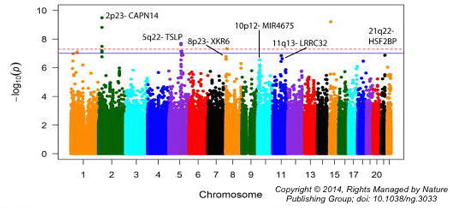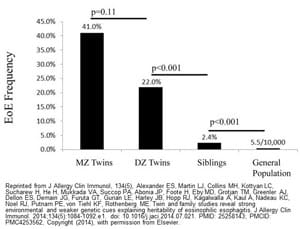Genetic Basis of Allergic Disease
Projects employ candidate-gene approaches, genome-wide association studies (GWAS), whole-exome sequencing (WES), and other advanced techniques and approaches to identify genetic risk factors for allergic diseases and to elucidate molecular insight into disease pathogenesis.
Current Projects
- Mechanism by which specific genetic susceptibility loci contribute to EoE susceptibility and related responses
- Deciphering the role of the 2p23 genetic variants, particularly CAPN14 in EoE
- Deciphering the role of the 5q22 genetic variants, particularly TSLP in EoE
- Epistasis between CAPN14, TSLP and other genetic risk variants
- Identification of causative mutations in EoE via Next Generation Sequencing
- Genetics of Multiplex EoE
- Interaction between genome, environome and microbiome
- Polygenic risk scores





